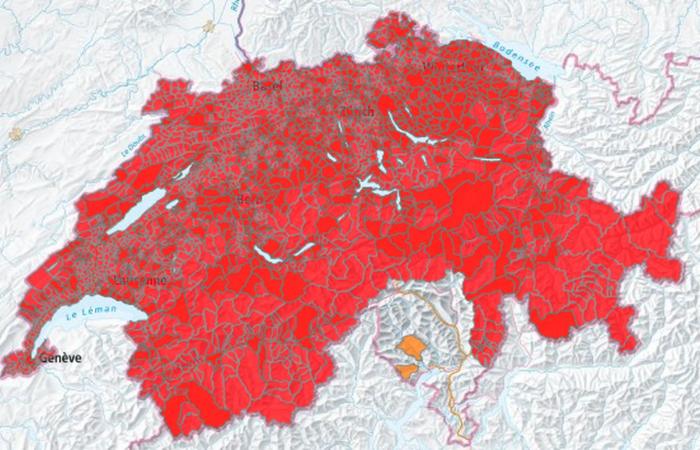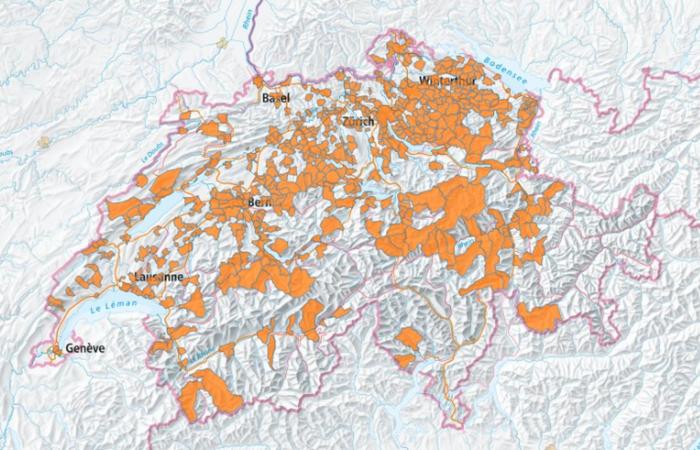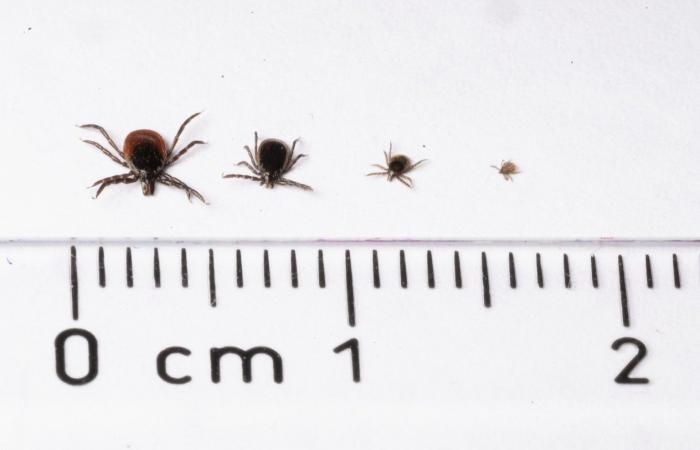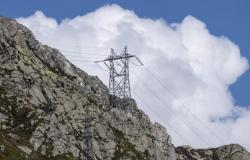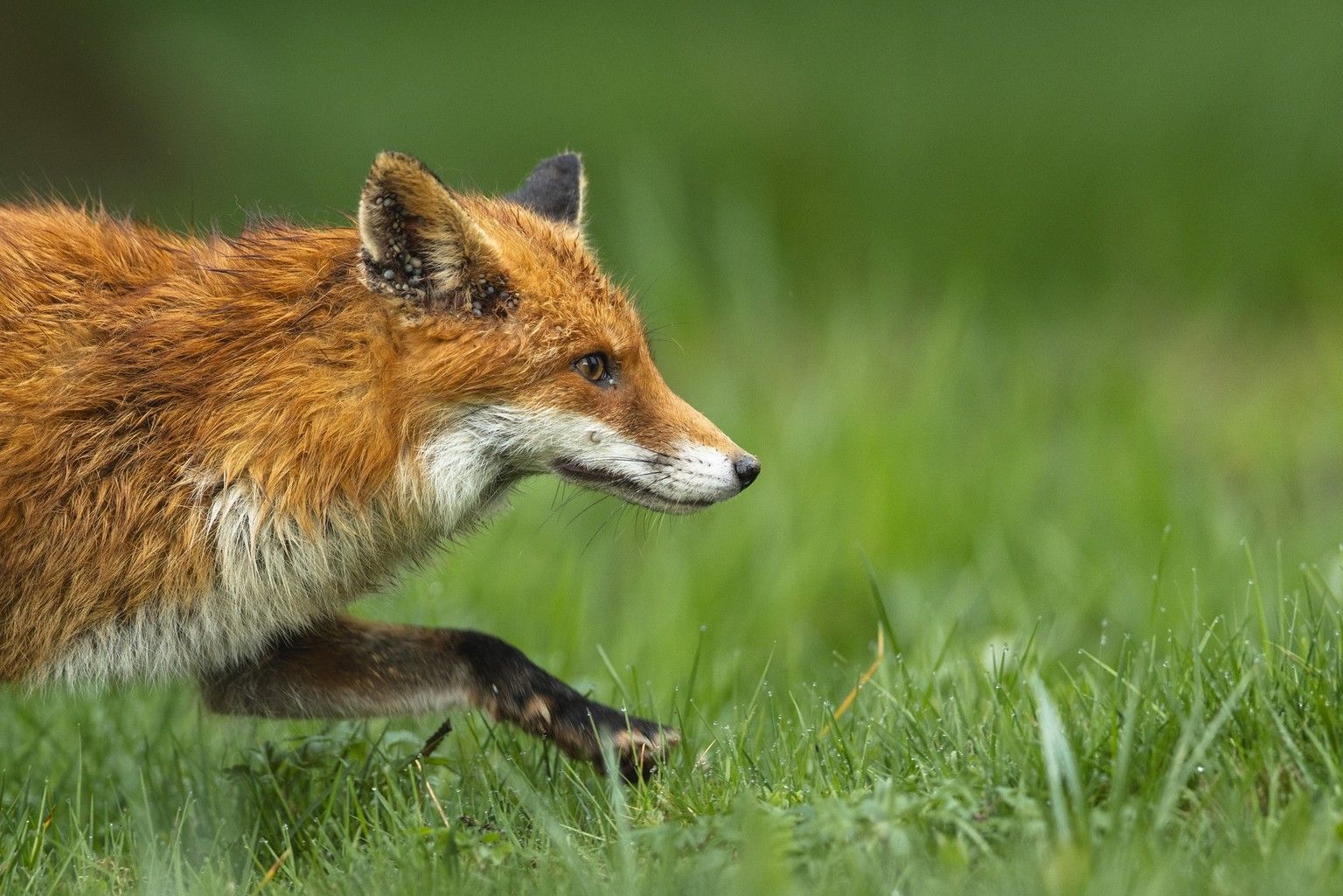
This rebirth, photographed in the Franches-Montagnes, is covered with ticks.Image: Mickaël Sauser
Switzerland sees many walkers or hikers each year being bitten and infect by ticks. We explain what to do.
08.05.2025, 15:0708.05.2025, 15:07
Mickaël Sauser, a Jura animal photographer “fascinated by emotion” that the foxes transmit, captured clichés of a female stung by a hundred ticks in the ear.
“Myself, I had never seen that before”
Mickaël Sauser, quoted by the Jurassian daily
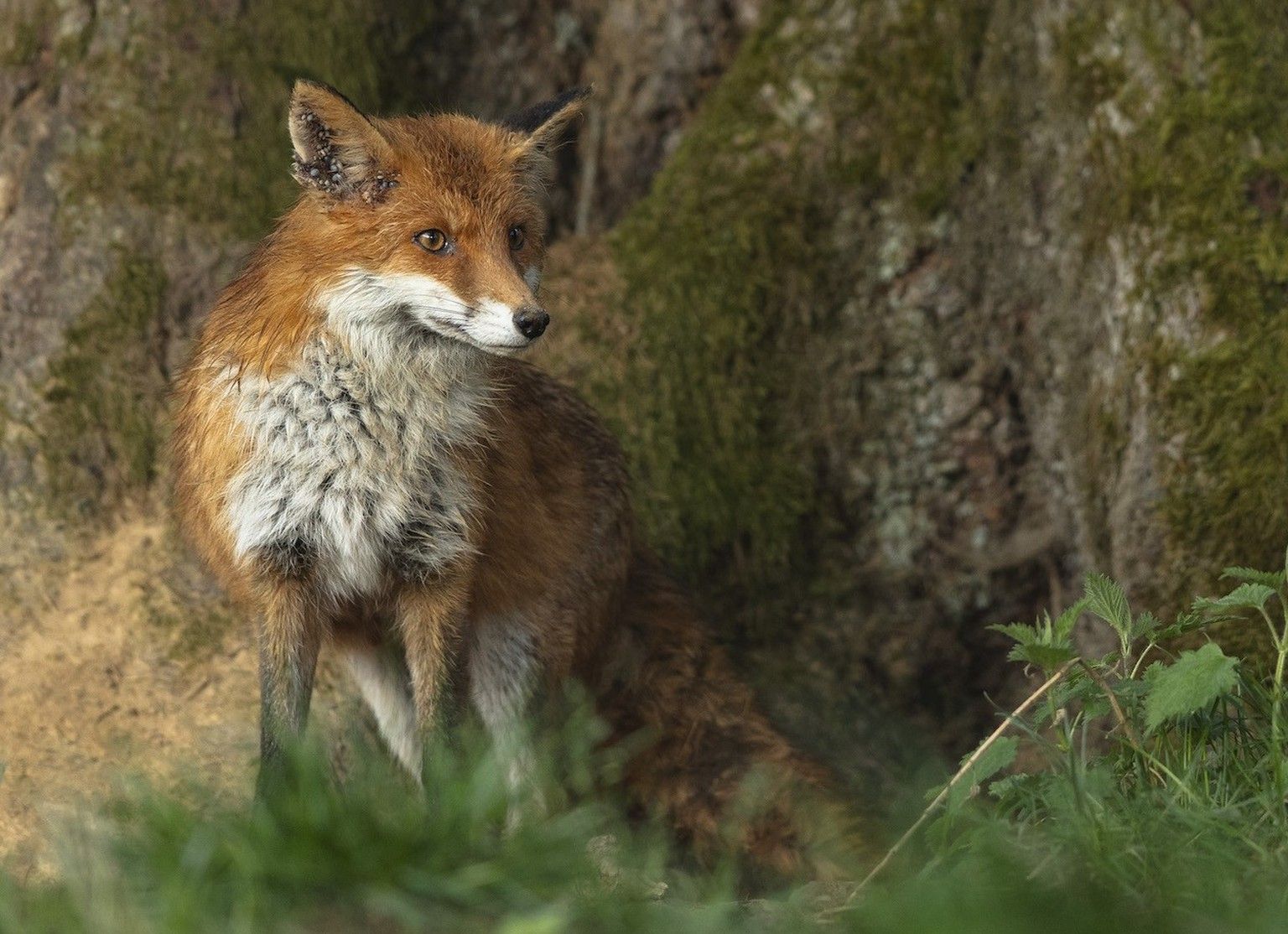
Ticks “fix” the animal and feed on its blood.Image: Mickaël Sauser
Quoted by The Jura dailyAlain Bieri, guardrail, talks about an exceptional quantity of ticks on this rebirth. The cantonal inspector (Jura) of fauna, Amaury Boillat, agrees:
“Any wild mammal is infested with ticks, rodents to the largest fauna, but here it is impressive”
If the animal is not in danger, according to the cantonal specialist, it is an opportunity to alert the risks that ticks are increasingly posing, especially with less and less harsh winters.
What risks with ticks in Switzerland
Ticks in themselves do not represent dangers for humans, on the other hand, they can be infected with several microbes and therefore transmit diseases. Infovac, platform of Unige and OFSP, recalls on this subject:
“The two largest diseases are borreliosis (Lyme disease, caused by Borrelia Burgdorferi bacteria) and tick-encephalitis caused by the FSME virus and known as the meningoencephalitis‹ Vernoestival ›by reference to the seasons (spring-summer) during which it prevails.”
The differences between these two diseases are also based on their treatment:
- Lyme disease (or borreliosis) is treated by antibiotics, since it is due to a bacteria.
- Tick-entertainment (FSME), being a viral infection for which there is no specific treatment “the only really effective protection is therefore based on vaccination.”
Mostly, infections by the FSME virus are asymptomatic. But otherwise, the infected person will feel “influenza symptoms: fever as well as headache and joint pain.”
-
2025 already presents a large number of declared cases of Lyme disease in Switzerland. Image: OFSP
The suva describes two phases and their symptoms, after an incubation period of 2 to 28 days:
- One to two weeks after the bite
Grippal symptoms with fever and headache. This phase only lasts a few days. - Several weeks after the bite
In 5 to 15% of people affected, after a few days of apparent healing are observed, inflammation of the nervous system with violent headache and sometimes paralysis and disorders of consciousness. Sustainable consequences and deaths are possible in 1% of neurological cases.
What regions of Switzerland are affected by the tick?
Unfortunately, the OFSP is not reassuring:
“All of Switzerland, with the exception of the Canton of Ticino, is considered an area at risk of FSME”
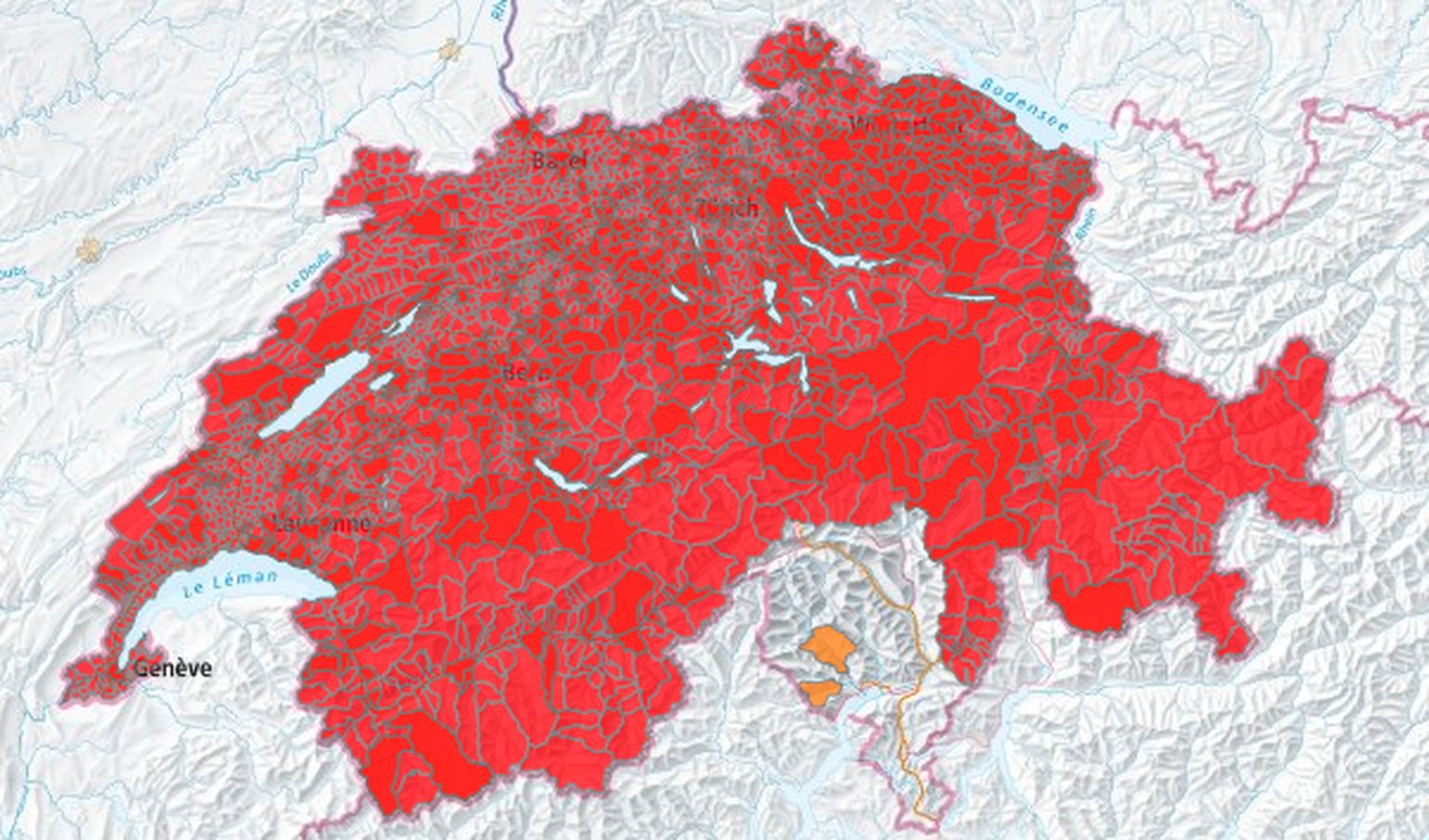
Here are the areas of Switzerland where tick vaccination is recommended.Image: OFSP
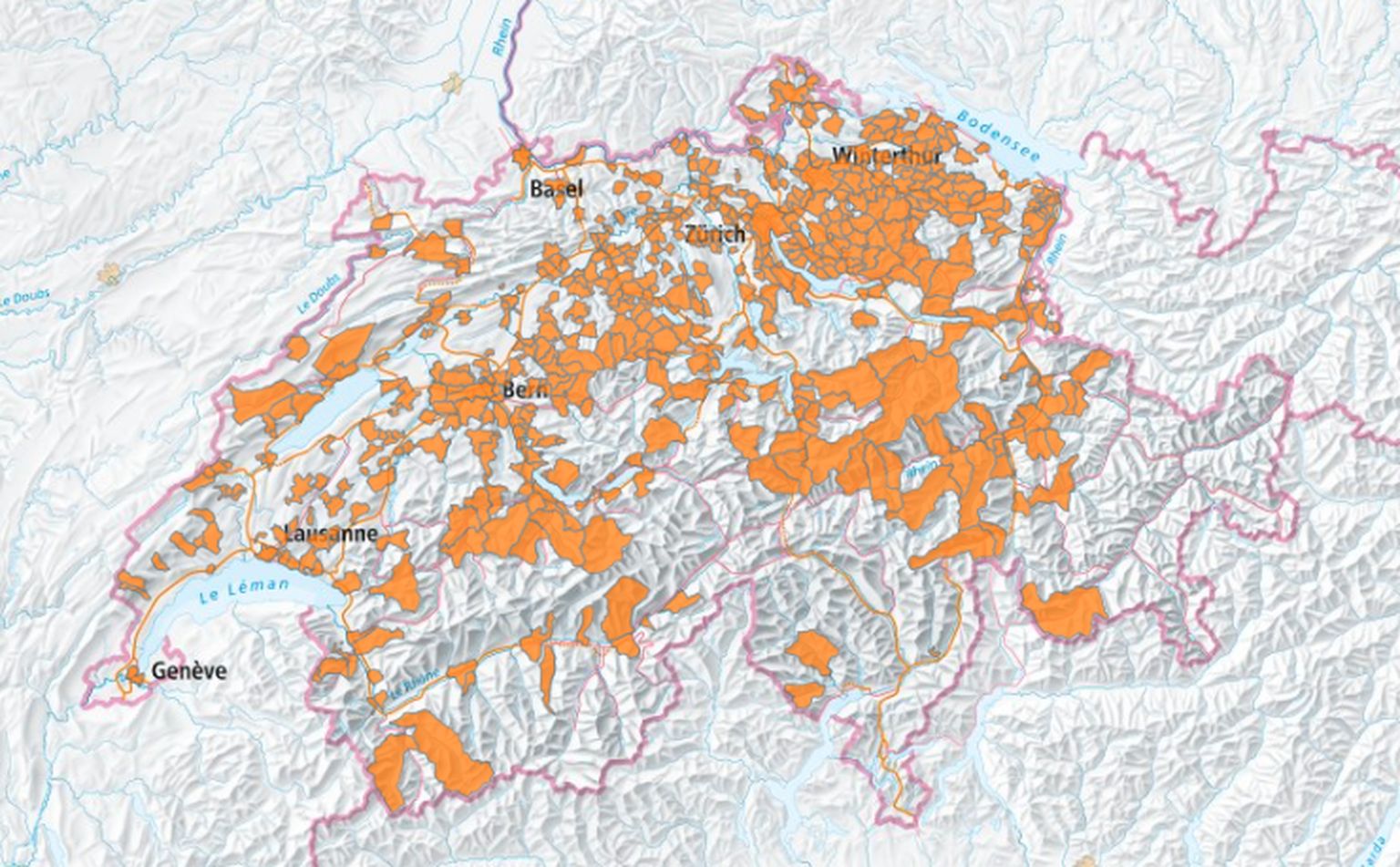
Here are the areas of Switzerland where bites have been declared.Image: OFSP
How to protect yourself from ticks in Switzerland
The best protection against the consequences of ticks remains vaccination (and vigilance):
“It is recommended for everyone, generally from the age of three, exposing ticks in an area at risk (all of Switzerland, except the canton of Ticino).”
Ticks “often go unnoticed”, the OFSP advises “to examine its body and clothes after an excursion in the forest or in the undergrowth in order to detect ticks.” Animals (cats, dogs, horses) must also be scrutinized carefully.
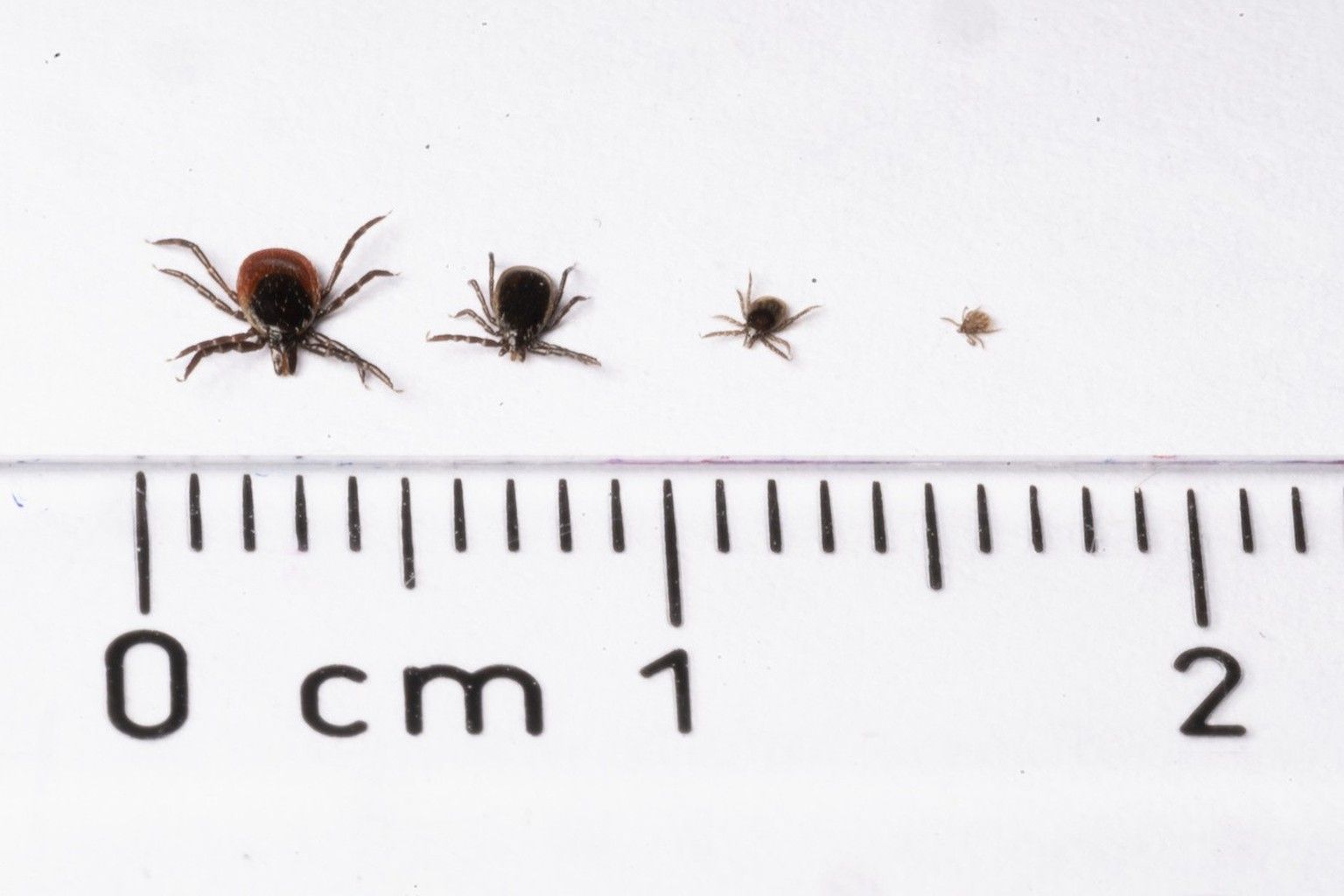
The size of ticks varies strongly.Image: KEYSTONE
What to do in case of ticks on your skin
Finally, the Federal Office for Public Health recommends “to extract ticks as quickly as possible”:
- “Get them with a tweezers as close as possible to the skin and to pull gradually,
- Then disinfect the place of the bite,
- Consult a doctor in case of fever or other symptoms following a tick sting. ”
(she)
News in Switzerland is here
Show all articles





